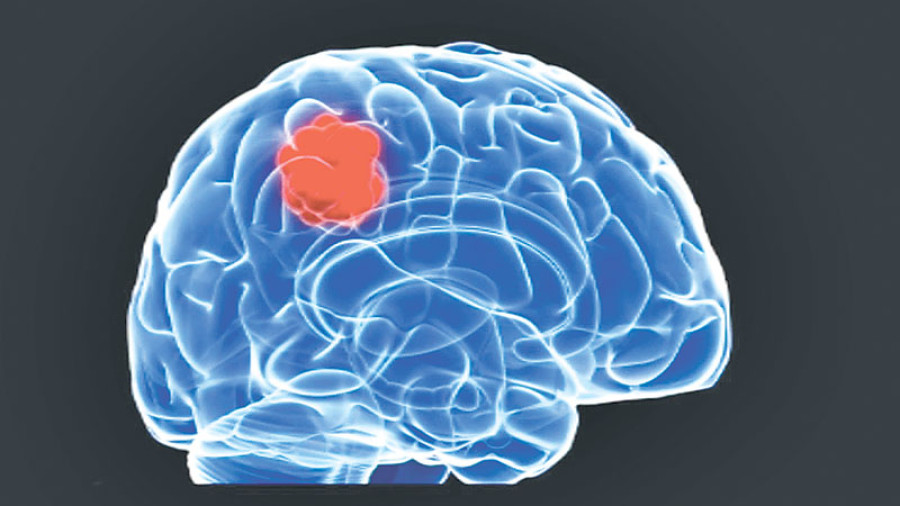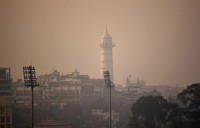Opinion
Debunking the myth
Brain tumours can be treated in Nepal with results comparable to developed countries
Dr Gopal Sedain
I frequently encounter patients who come to me complaining of headache. Many times, the most important concern is not the headache but whether there is some underlying problem inside the brain, a brain tumour. With advances in diagnostics and management technology, the risks have substantially been lessened. A brain tumour may arise from the brain which is called primary, or it may have spread from the lungs, breast or intestine which is called secondary. We seldom know why one person has a tumour and the other doesn’t. Studies have shown that ionising radiation (high dose X-rays, CT scans) can cause cell damage and lead to brain tumours. This is why we discourage people from getting unnecessary scans. Research is being done to find out whether using cell phones, having a head trauma or being exposed to chemicals or magnetic fields are risk factors.
Red flags
Manifestations of brain tumours depend upon the location, size and type. Symptoms occur when the tumour presses upon, damages or stimulates the brain or blocks the fluid pathway. The most common symptoms are: Headache (usually worse in morning); nausea and vomiting; changes in speech, vision or hearing; problems in balancing or walking; changes in mood, personality, memory or ability to concentrate; muscle jerking or twitching (seizures or convulsions) and weakness or numbness in one half of the body.
Most often, these symptoms are not due to a brain tumour, and a physician will be able to tell you if you need further tests. We often diagnose a tumour with a CT (Computerised Tomogram) or an MRI (Magnetic Resonance Imaging). A CT scan is an X-ray machine linked to a computer that takes a series of detailed pictures of your head. An MRI is a large machine with a strong magnet linked to a computer which is used to make detailed pictures of areas inside your head. An MRI is better than a CT in diagnosing most of the tumours in terms of defining the lesion, and there is no radiation hazard as there is in a CT. However, an MRI of the brain costs more than a CT.
Harbouring any tumour in the brain is dangerous, so the terms benign and malignant are often not used in brain tumours. The World Health Organisation (WHO) grades brain tumours from Grades I to IV, Grade IV being the most aggressive. Surgery is the primary treatment for brain tumours. If the tumour is in a safe part of the brain, it is less aggressive and total removal is possible, and the outcome is good. Sometimes, the tumour is in a difficult part of the brain where total removal would result in some defects to the patient, in which case we might have to remove a part of it and give additional treatment like radiation and chemotherapy.
Many patients are afraid to go under the surgeon’s knife and wonder if there are medications to get rid of the disease, but the answer is no. There are medications for seizures and steroids to control swelling of the brain, but treating tumours with medications alone is not possible. In some patients with brain tumours like meningiomas, pituitary gland tumours or low grade tumours like pilocytic astrocytoma, surgical treatment can almost cure the patient. The fear of undergoing an operation generally arises from deficits that can occur after surgery. This can be overcome in most cases with meticulous planning and skill.
With advances in brain tumour management including surgery, radiotherapy and chemotherapy, survival chances have improved. However, aggressive tumours recur. Particularly patients with high grade lesions of WHO Grade IV have limited chances of making a prolonged recovery due to the tumour appearing again. Researchers are trying hard to deal with this type of tumour using various newer modalities like immunotherapy. Brain tumour surgery is being performed in Nepal relatively safely. With advances in technology, which are now available in many centres in Nepal, and an increased number of trained neurosurgeons, almost all types of brain tumours can be treated in Nepal with results comparable to the developed countries.
Sedain is a neurosurgeon and assistant professor at the Institute of Medicine




 19.12°C Kathmandu
19.12°C Kathmandu











